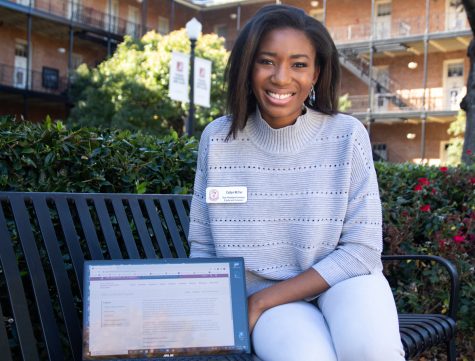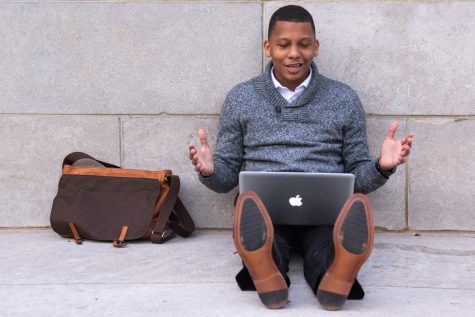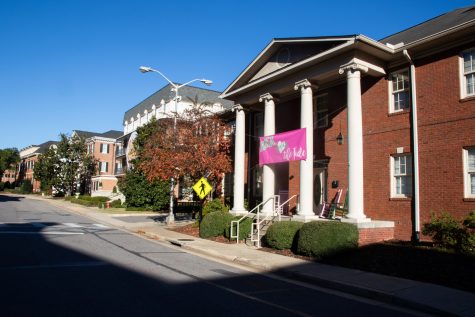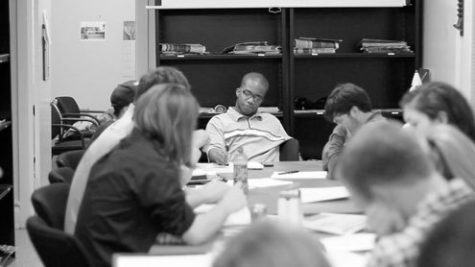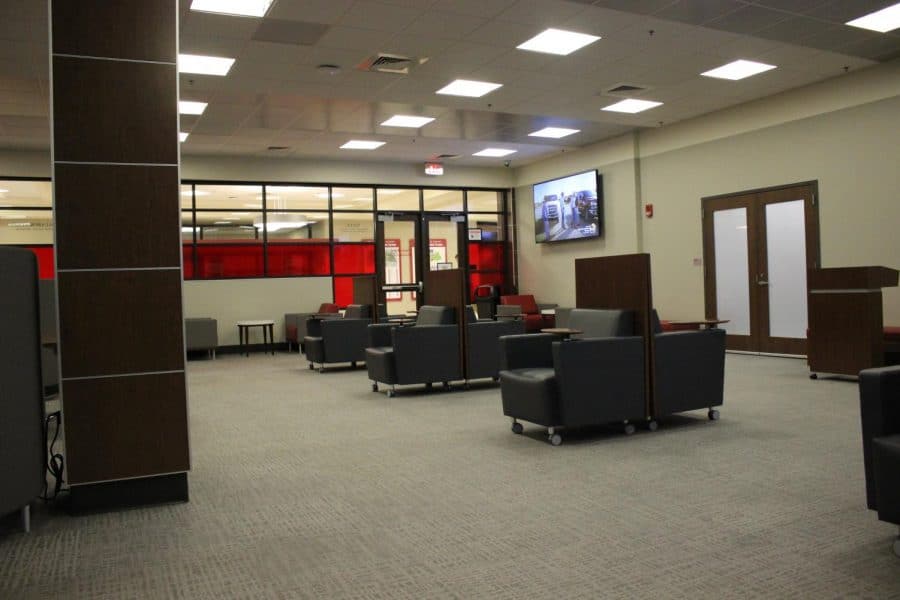‘Open arms’: IDC staff have high hopes for its new home
The Intercultural Diversity Center, established after much lobbying from student groups like We Are Done, was previously the sole occupant of the Riverside Annex. Now it’s in the center of campus.
After four years tucked away on the edge of campus, The University of Alabama Intercultural Diversity Center (IDC) packed its bags and moved into one of the University’s biggest hubs—the Ferguson Student Center.
The center, which features vast study spaces and rotating exhibits on inclusivity, had its grand opening on Oct. 14, when it officially welcomed students into its new space on the second floor of the Ferg.
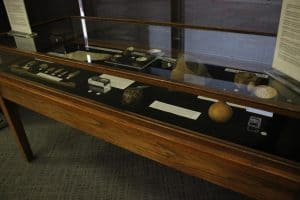
Earlier in the summer, Vice President and Associate Provost for Diversity, Equity and Inclusion G. Christine Taylor unveiled the finalized plans for the new IDC to the Black Alumni Association and was met with cheers of support.
“There were ‘ooh’s’ and ‘ah’s’ and ‘I wish we had something like that when I was in school,” Taylor said.
LaToya Scott, the IDC’s interim director and assistant vice president of engagement and programming for the Division of Diversity, Equity and Inclusion, had a story of her own involving alumni support.
“A couple of days ago, I had a parent stop by and talk about what a safe space looks like for their child,” Scott said. “The parent is an alumni of The University of Alabama and they didn’t have a diversity center when they went to school here. To hear those stories and hear about how excited they were for this place was very impactful.”
The IDC is more than just a place for socializing – it also serves as a place for education, emotional support and educational growth.
“It’s an example of how we are saying we acknowledge the importance of diversity, equity and inclusion,” Taylor said. “And we acknowledge the value of creating safe spaces for students, as well as culturally informed spaces for students.”
One of the most defining new features of the IDC is the history wall. It offers an opportunity for “cultural teaching” by highlighting landmarks and notable moments of diversity and inclusion on UA’s campus.
“It really makes the things people talk about tangible,” Taylor said. “All of it serves as an opportunity for passive learning. Just because you’re not in class, it doesn’t mean you’re not learning something.”
There are learning opportunities all across the space, some more obvious than others. Just above the center’s recognizable, red tinted glass panels are words representing the driving goals behind the IDC’s efforts: “collaboration,” “passion” and “diversity.”
“It was a group effort to make sure that we represented all constituencies on campus,” Scott said. “We wanted our campus to look at those words and think, ‘What do those words mean to me?’ To see the students talk about it in the space is very heartwarming.”
Collaboration is a key component of success in the IDC. The center partners with other campus organizations and departments to bring the most enriching experiences to students. The accessible location, relaxing atmosphere and comfortable furniture act as a great environment for events of all kinds.
“Everything that happens in there is not necessarily something that we’re programming,” Taylor said. “Sometimes there are areas that other groups are programming because it’s just such a great space.”
The space is home to monthly passive programs, each highlighting another group. Over ten student organizations and four departments have already booked some of the space for their own events and programs.
“We are programming every day in some shape, form or fashion” Scott said. “So there’s a constant engagement in that space.”
Students with little prior knowledge of the IDC have already begun recognizing the new space and asking questions.
Gracie Geddie, a junior majoring in exercise and sport science, was aware of the IDC prior to the new location but not of any of its resources.
“I had heard of the IDC before, but I didn’t know what all they did or what they had,” Geddie said. “I only really knew their name and that’s about it. But this space is really nice, and I like it a lot.”
Scott mentioned that in the summer, COVID-19 made her concerned about encouraging student engagement in the fall semester.
“It was challenging to really get our students to apply for these positions at some points,” she said. “They didn’t have a visual representation of what it was or what we do. We really had to explain our vision and mission, but amazingly enough we had an outpour of students responding and applying to jobs.”
Since the opening of its new, prime location, the IDC has seen a huge rise in student engagement. On the day of interviewing, Taylor said that more than 160 new students dropped by the center. And the IDC is ripe for more than a one-time visit. There are opportunities for all interested students to get further involved within the IDC.
“We have students who come by and volunteer,” Scott said. “We are so welcoming of our students, whether you are an employee or a part of a class. If an individual student wants to volunteer, we would love it. We want students, faculty and staff to feel engaged and be connected.”
Despite the hurdles of the pandemic, the center has already hosted several successful and safe events. Some of the highlights include the grand opening and ribbon cutting, football watch parties and even an Election Day gathering.
“I really love seeing the students be creative about the utilization of the space and making it their own,” Taylor said.
These hostings and watch parties are already striking up conversations between students, sparking educational interests and providing opportunities for immersive learning.
Scott was particularly moved by the election watch night.
“I thought that was a very special program,” Scott said. “There was lots of diversity. But to see that educational component, and to really hear the stories from the students and see our faculty come in and explain to the students what they were seeing on the screen was just so special.”
Both Taylor and Scott are excited to see what the future holds for the IDC and how its success will benefit more than just the UA community.
“I’m looking forward to a time where we have students who serve as diversity ambassadors, who will help us with some of the outreach we want to do on campus,” Taylor said.
And while the University has not been a trailblazer for diversity in recent years, Scott is hopeful that the IDC could become a standard-bearer for other centers of its kind at other universities.
“Our goal for the future is for the IDC to be known as one of the leading diversity centers across the country,” Scott said. “We train our students and faculty through three focused areas: cultural exploration, educational engagement and social enrichment. Each one of our programs in our space falls into each one of those categories.”
The faculty and staff of the IDC want each and every student on the University’s campus to feel comfortable and welcomed in their space, especially those who may feel timid of new places.
“We want to meet who you are, in every facet of you,” Scott said. “If you can just make it to the IDC, we promise we will welcome you with open arms.”





